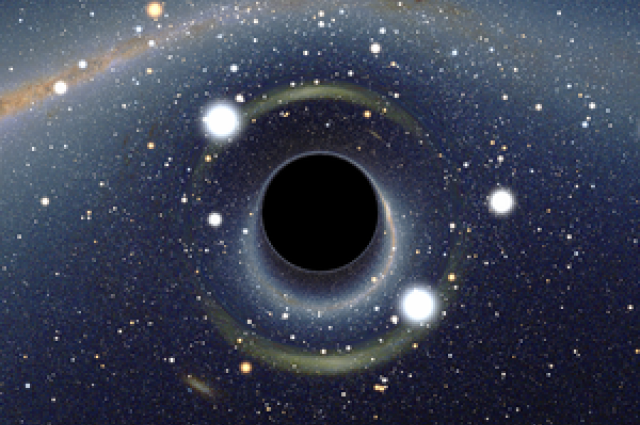One of the longest standing mysteries of black holes is what happens to stuff when it falls inside. Information can’t move faster than light, so it can’t escape a black hole, but we know that black holes shrink and evaporate over time, emitting Hawking radiation. This has troubled scientists for 40 years. Information can’t simply vanish.
Now, physicists Kamil Brádler and Chris Adami, from the University of Ottawa and Michigan State University respectively, have been able to show that the information is not at all lost, but is transferred from the black holes into the aforementioned Hawking radiation, potentially solving a long-standing mystery of cosmology.

Over 40 years ago, Stephen Hawking put forward the idea that although nothing can escape a black hole, there should be a certain amount of particles emitted from the outer edge of the black hole’s event horizon. This emission would over time steal energy from a black hole, causing it to evaporate and shrink.
The emission was not from the black hole itself, so physicists began to wonder what happens to the information within black holes when they disappear. If the information is irretrievably lost there would be a violation of the laws of quantum mechanics, and this led to the Black Hole Information Paradox.

“The issue was never laid to rest because Hawking’s calculation was not able to capture the effect that the radiation, called Hawking radiation, has on the black hole itself,” Adami said in a statement.
“Physicists assumed that the black hole would shrink in time as the Hawking radiation carries away the black hole’s mass, but no one could verify this through mathematical calculations.”

Several solutions have been put forward to resolve the paradox, but many physicists just assumed that it would be solved once we had a complete theory of quantum gravity. Although general relativity and quantum mechanics are two of humanity’s greatest achievements they don’t work well together. Black holes are one of those cases in which both theories are needed.
The model put forward by Brádler and Adami looks at the quantum effect that produced Hawking radiation. They used computer simulations to evolve the the black holes, and they noticed that the Hawking radiation was taking energy and information out of the black hole.

“To perform this calculation, we had to guess how a black hole interacts with the Hawking radiation field that surrounds it,” Adami said.
“This is because there currently is no theory of quantum gravity that could suggest such an interaction. However, it appears we made a well-educated guess because our model is equivalent to Hawking’s theory in the limit of fixed, unchanging black holes.”
Their work, published in Physical Review Letters, is an interesting step forward in understanding black holes. Other teams are also trying to solve the information paradox. But while it doesn’t tell us much about the future theory of quantum gravity, it hints that this theory is there for us to discover.
“While our model is just that – a model – we were able to show that any quantum interaction between black holes and Hawking radiation is very likely to have the same properties as our model,” Brádler said.







Share your thoughts in the comments below...